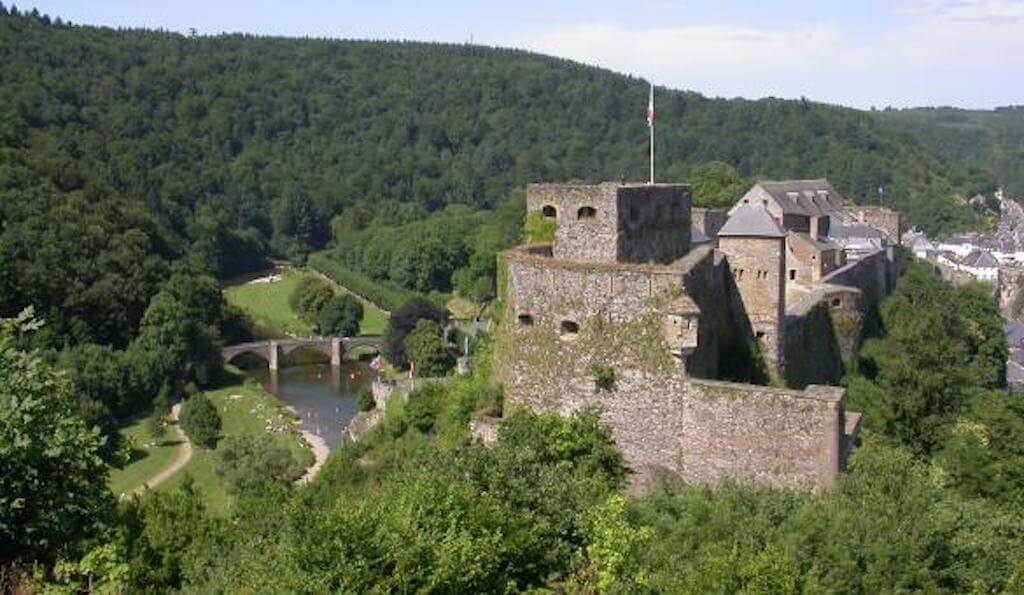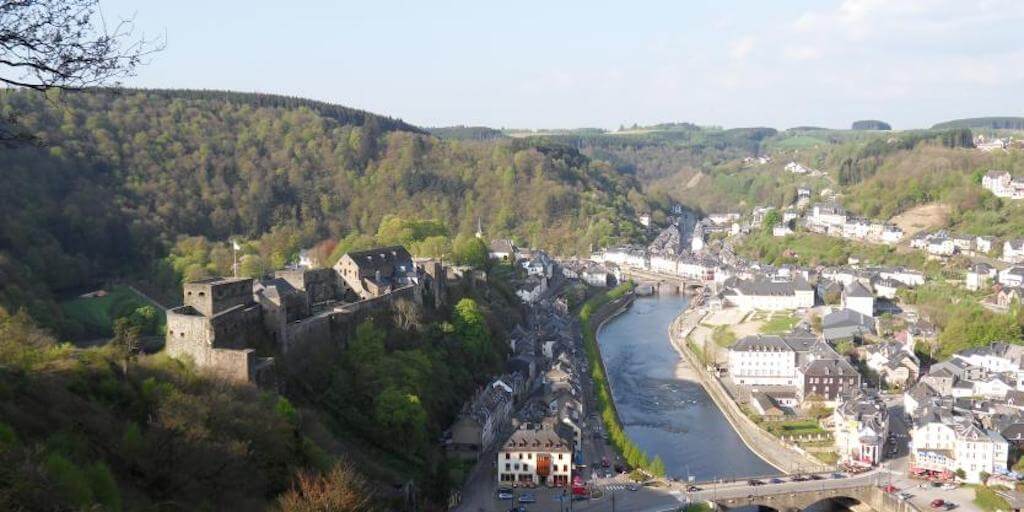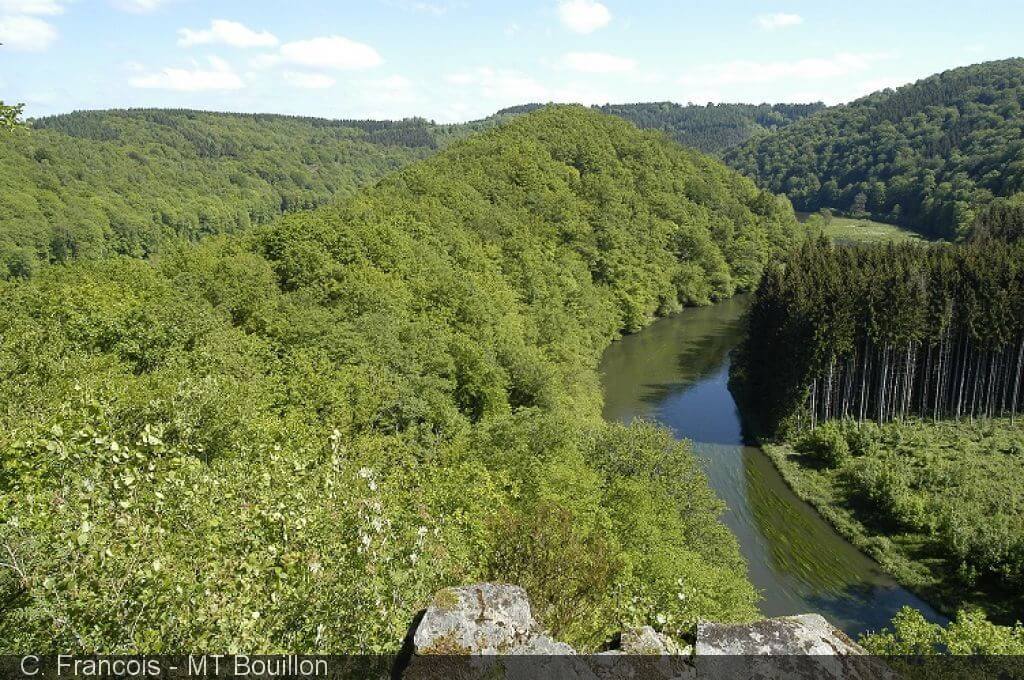
On the viewpoint Pic du Diable you can enjoy a wide panorama of the meanders of the Semois, the deep forests and the Mill of l'Epine. The road to Corbion offers spectacular views of the Semois. The return to Bouillon takes you along small paths through dense deciduous forests and on the 'Rocher du Pendu' offers a fairytale view of the landscape and the Abbey of Clairefontaine. Along the course you will see the Park of the Arboretum with many ancient trees and 'La Ramonette', the site where the first wooden castle of Bouillon was built. It is a tiring trail, but wonderful and it will certainly tempt experienced hikers.
Distance: 15 km.
Time: 5h00.
Grade: Difficult.
Type: Circular.
Gps Track: Yes.
Route description: Yes.
Wheelchair: Not suitable.
Dog: Allowed.
Height gain: 598 meters.
Trail: Paved and unpaved.
Marking: Red diamond and red triangle.
Hiking shoes recommended.
Advertisement.
Along the Semois to Corbion.
From Bouillon the trail goes to the viewpoint Pic du Diable and then in the direction of Corbion. Here you can visit the tobacco museum. Then it continues to the Rocher du Pendu, a fairytale view of the landscape and the Abbey of Clairefontaine. The last part runs along the Park of the Arboretum with many ancient trees and La Ramonette, the site where the first wooden castle of Bouillon was built.

Download PDf for route description.
Steep passages and paths can be slippery in rainy weather.
POI 1 - Tobacco museum.
The nice smell of tobacco meets the visitors in this museum where Gaëtane invites you to get acquainted with the art of tobacco making and the work of her husband Vincent. As an introduction, a video montage of about fifteen minutes is presented. Then you can discover the museum yourself, where signs explain the origins of planting tobacco, the history, the traditional processing per stage.
Tobacco museum.
www.tabac-semois.be.
POI 2 - Bouillon Castle.
The castle is located on three rock points above the river Semois and consists of three forts that are connected by means of bridges. The castle was probably built in the 8th century. In 988 the castle is mentioned in writing for the first time. Duke of Lower Lorraine, Godfrey of Bouillon, who in 1082 inherited the castle and the glory of Bouillon, gave this and the glory in 1096 as collateral to the prince bishopric of Liège, to prince-bishop Otbert of Liège, to be able to finance the First Crusade . The Godfrey of Bouillon room, dating from the 13th century, is carved into the rocks. In this room there is a very old wooden cross in the rock bottom. Against one of the walls stands the statue of Godfrey of Bouillon, and on both sides of this statue hang the blazons of other owners of the castle. In 1134 Reinoud I of Bar conquered the castle. Bishop Alberon II of Namur besieged the castle in 1141 and the count restored the castle and its lordship. In 1672 the castle was besieged for 20 days and conquered by Louis XIV of France. From the Habsburg period the Austrian tower dates back to 1551, when the castle was thoroughly renovated. The following major renovations were carried out by the French general Sébastien Le Prestre de Vauban under Louis XIV of France. The last renovations were carried out under the United Kingdom of the Netherlands, when the medieval donjon was demolished. The military significance of the castle did not end until 1830. (source: Wikipedia).
Office du Tourisme de Bouillon.
www.bouilloninitiative.be.



